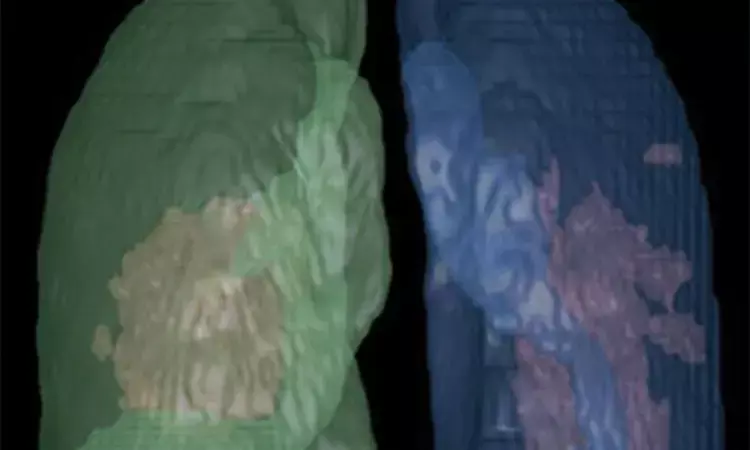- Home
- Medical news & Guidelines
- Anesthesiology
- Cardiology and CTVS
- Critical Care
- Dentistry
- Dermatology
- Diabetes and Endocrinology
- ENT
- Gastroenterology
- Medicine
- Nephrology
- Neurology
- Obstretics-Gynaecology
- Oncology
- Ophthalmology
- Orthopaedics
- Pediatrics-Neonatology
- Psychiatry
- Pulmonology
- Radiology
- Surgery
- Urology
- Laboratory Medicine
- Diet
- Nursing
- Paramedical
- Physiotherapy
- Health news
- Fact Check
- Bone Health Fact Check
- Brain Health Fact Check
- Cancer Related Fact Check
- Child Care Fact Check
- Dental and oral health fact check
- Diabetes and metabolic health fact check
- Diet and Nutrition Fact Check
- Eye and ENT Care Fact Check
- Fitness fact check
- Gut health fact check
- Heart health fact check
- Kidney health fact check
- Medical education fact check
- Men's health fact check
- Respiratory fact check
- Skin and hair care fact check
- Vaccine and Immunization fact check
- Women's health fact check
- AYUSH
- State News
- Andaman and Nicobar Islands
- Andhra Pradesh
- Arunachal Pradesh
- Assam
- Bihar
- Chandigarh
- Chattisgarh
- Dadra and Nagar Haveli
- Daman and Diu
- Delhi
- Goa
- Gujarat
- Haryana
- Himachal Pradesh
- Jammu & Kashmir
- Jharkhand
- Karnataka
- Kerala
- Ladakh
- Lakshadweep
- Madhya Pradesh
- Maharashtra
- Manipur
- Meghalaya
- Mizoram
- Nagaland
- Odisha
- Puducherry
- Punjab
- Rajasthan
- Sikkim
- Tamil Nadu
- Telangana
- Tripura
- Uttar Pradesh
- Uttrakhand
- West Bengal
- Medical Education
- Industry
CT chest findings of COVID-19 versus influenza virus pneumonia
 IMAGE: ARTIFICIAL INTELLIGENCE (AI)-ASSISTED SOFTWARE WAS USED TO IDENTIFY INFLAMMATORY TISSUES IN LUNG AND AUTOMATICALLY SEGMENT INFLAMMATORY LESIONS. THREE-DIMENSIONAL IMAGE SHOWS REGIONS OF COVID-19 PNEUMONIA IN LUNG THROUGH AI POSTPROCESSING.... view more CREDIT: AMERICAN JOURNAL OF ROENTGENOLOGY (AJR)
IMAGE: ARTIFICIAL INTELLIGENCE (AI)-ASSISTED SOFTWARE WAS USED TO IDENTIFY INFLAMMATORY TISSUES IN LUNG AND AUTOMATICALLY SEGMENT INFLAMMATORY LESIONS. THREE-DIMENSIONAL IMAGE SHOWS REGIONS OF COVID-19 PNEUMONIA IN LUNG THROUGH AI POSTPROCESSING.... view more CREDIT: AMERICAN JOURNAL OF ROENTGENOLOGY (AJR)Leesburg, VA -- An open-access American Journal of Roentgenology (AJR) article investigating the differences in CT findings between coronavirus disease (COVID-19) pneumonia and influenza virus pneumonia found that most lesions from COVID-19 were located in the peripheral zone and close to the pleura, whereas influenza virus was more prone to show mucoid impaction and pleural effusion.
"However," lead author Liaoyi Lin of China's First Affiliated Hospital of Wenzhou Medical University cautioned, "differentiating between COVID-19 pneumonia and influenza virus pneumonia in clinical practice remains difficult."
A total of 97 patients (49 women, 48 men) were enrolled in this study. Of them, 52 patients (29 men, 23 women; age range, 21-73 years) had COVID-19 pneumonia; 45 patients (26 women, 19 men; age range, 15-76 years) had influenza virus pneumonia (28, influenza A; 17, influenza B). All patients had positive nucleic acid testing results for the respective viruses, as well as complete clinical data and CT images.
According to Lin and colleagues: "Between the group of patients with COVID-19 pneumonia and the group of patients with influenza virus pneumonia, the largest lesion close to the pleura (i.e., no pulmonary parenchyma between the lesion and the pleura), mucoid impaction, presence of pleural effusion, and axial distribution showed statistical difference (p < 0.05)."
Meanwhile, Lin et al. noted that the properties of the largest lesion, presence of ground-glass opacities, consolidation, mosaic attenuation, bronchial wall thickening, centrilobular nodules, interlobular septal thickening, crazy paving pattern, air bronchogram, unilateral or bilateral distribution, and longitudinal distribution did not show significant differences (p > 0.05).
Additionally, the authors observed no significant difference (p > 0.05) in CT score, length of the largest lesion, mean density, volume, or mass of the lesions between the two groups.
Because the CT manifestations of COVID-19 and influenza virus so often overlap, "even with the characteristics evaluated using AI software," Lin et al. wrote, "no significant differences were detected."
Thus, the authors of this AJR article concluded that the more important role of CT during the present pandemic is in finding lesions and evaluating the effects of treatment.
For more details click on the link: http://dx.doi.org/10.2214/AJR.20.23304
Hina Zahid Joined Medical Dialogue in 2017 with a passion to work as a Reporter. She coordinates with various national and international journals and association and covers all the stories related to Medical guidelines, Medical Journals, rare medical surgeries as well as all the updates in the medical field. Email: editorial@medicaldialogues.in. Contact no. 011-43720751
Dr Kamal Kant Kohli-MBBS, DTCD- a chest specialist with more than 30 years of practice and a flair for writing clinical articles, Dr Kamal Kant Kohli joined Medical Dialogues as a Chief Editor of Medical News. Besides writing articles, as an editor, he proofreads and verifies all the medical content published on Medical Dialogues including those coming from journals, studies,medical conferences,guidelines etc. Email: drkohli@medicaldialogues.in. Contact no. 011-43720751


